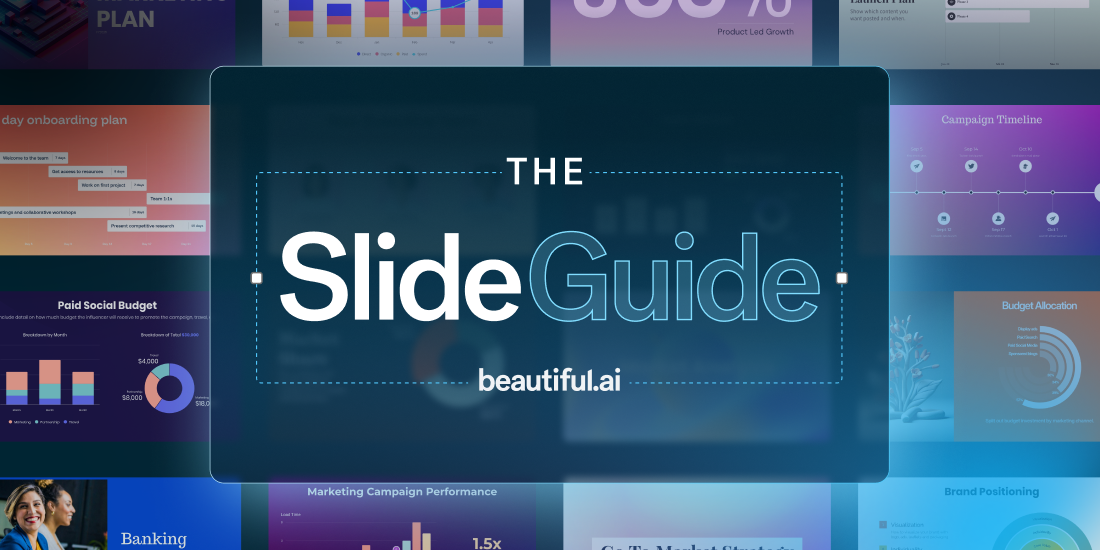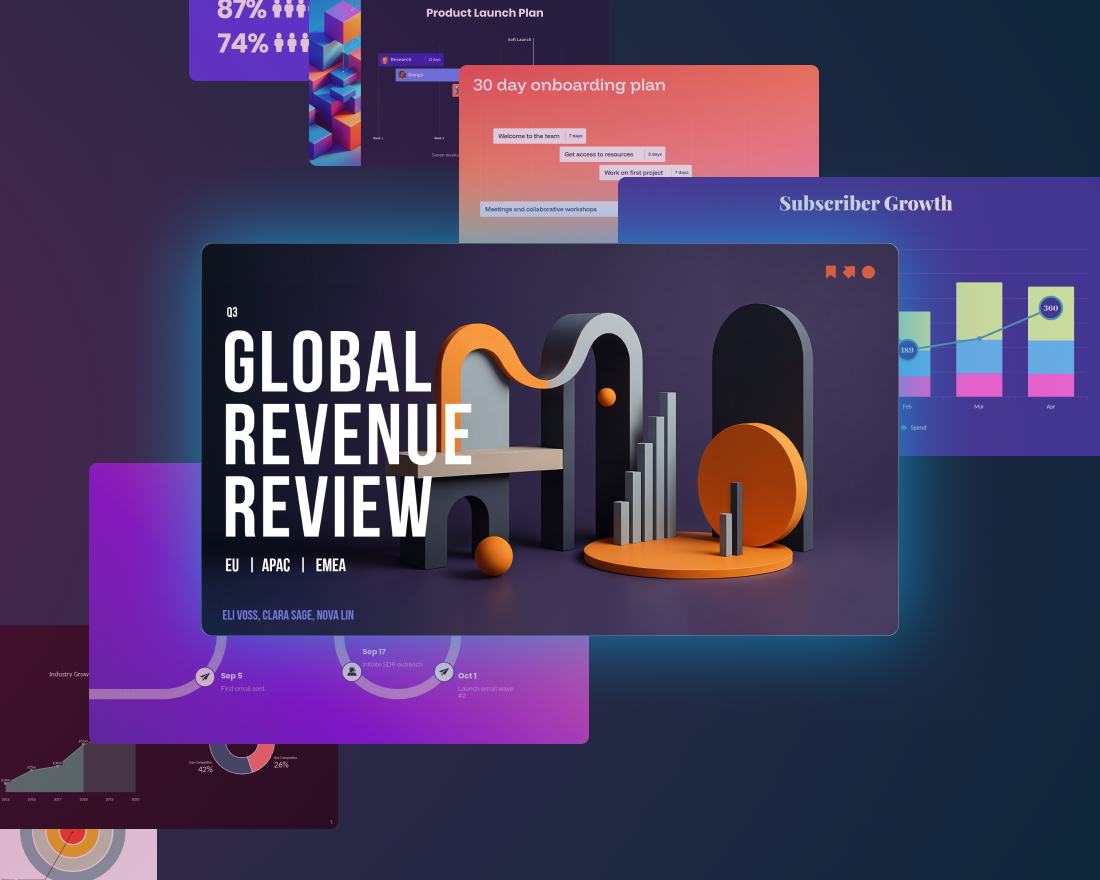
In a world where attention spans are shrinking and decisions are made in seconds, your sales presentation isn’t just a deck. It’s your story, your strategy, and often your one shot at making a lasting impression. Regardless of the industry, the difference between a “good” presentation and a winning one comes down to clarity, structure, and emotional connection.
Here’s how to elevate your sales presentations from standard slides to persuasive storytelling that converts.
1. Start with the buyer, not the product
The most common mistake in sales presentations is leading with features instead of value. Great sales decks begin by framing the customer’s problem in their own language. Use insights, not adjectives, and start with what your audience cares about most.
Ask yourself:
- What pain points are they trying to solve?
- What metrics define success for them?
- How does my solution make their day easier, faster, or more profitable?
When your story starts with their priorities, not yours, you’ve already earned attention.
2. Structure your story like a narrative, not a report
A powerful sales presentation follows a clear narrative arc that starts with a problem and ends with clear, actionable next steps.
This simple structure helps the audience follow your reasoning and remember your message. Each slide should do one job, advance the story. Too many sales decks collapse under information overload. Instead of cramming in data and product information, choose only the insights that reinforce your main point.
3. Simplify the design — focus on clarity and flow
Visual clutter is the silent killer of good ideas. If your audience is squinting to read text or spinning their wheels deciphering a chart, they’re not listening to you.
Here’s what works:
- Limit text to one key takeaway per slide.
- Use visuals like charts, icons, and product imagery to illustrate data or emotion.
- Keep consistency in color, typography, and layout.
- Guide the eye with hierarchy: headlines first, details second.
Tools like Beautiful.ai help you create balanced layouts automatically, so you can focus on what matters—the message, not the margins.
4. Make data tell a story
Sales audiences crave data, but they need help seeing what it means. Instead of flooding them with numbers, show them patterns and implications.
Turn “what” into “so what”:
- Instead of “Q3 revenue grew 15%,” try “Our strategy increased client retention by 15% — a key driver of recurring revenue.”
- Replace dense tables with clear, comparative visuals.
- Annotate charts to highlight insights directly.
When you guide your audience through the data rather than dumping it on them, you build credibility and confidence.
5. Use AI to streamline prep and personalize content
AI tools can now take hours off your prep time and help tailor each pitch to the audience. From auto-generating slide layouts to summarizing discovery notes or drafting speaker scripts, AI helps teams focus on strategy, and more importantly, closing the deal.
Beautiful.ai gives you a solid starting point with AI-powered decks and slides so you’re not wasting time staring at a blank slide. If you’re reusing an existing slide, our Smart Slide layouts make it faster and easier to edit content so you can tailor it to new prospects. To drive your message home, you can leverage AI to adjust your voice and tone to specific audiences or industries.
6. Rehearse for flow, not perfection
The best presenters sound conversational, not memorized. Practice transitions, not just lines. Time yourself, anticipate questions, and focus on how you guide attention through each idea.
Try recording yourself and watching the playback — you’ll spot filler words, pacing issues, or points where the audience might tune out. Remember: confidence doesn’t come from memorization; it comes from clarity.
7. End with a clear, actionable close
Every sales presentation should end with momentum. Instead of “Thank you,” close with a next step:
- Schedule a follow-up demo
- Share pricing details
- Send a proposal
- Confirm a start date
A good close makes it easy for the audience to say “yes”, and for the conversation to keep moving forward.
Improving your sales presentations isn’t about adding more slides or flashier graphics, it’s about refining your message, focusing on your audience, and using smart tools to elevate your delivery.

.png)




.gif)
